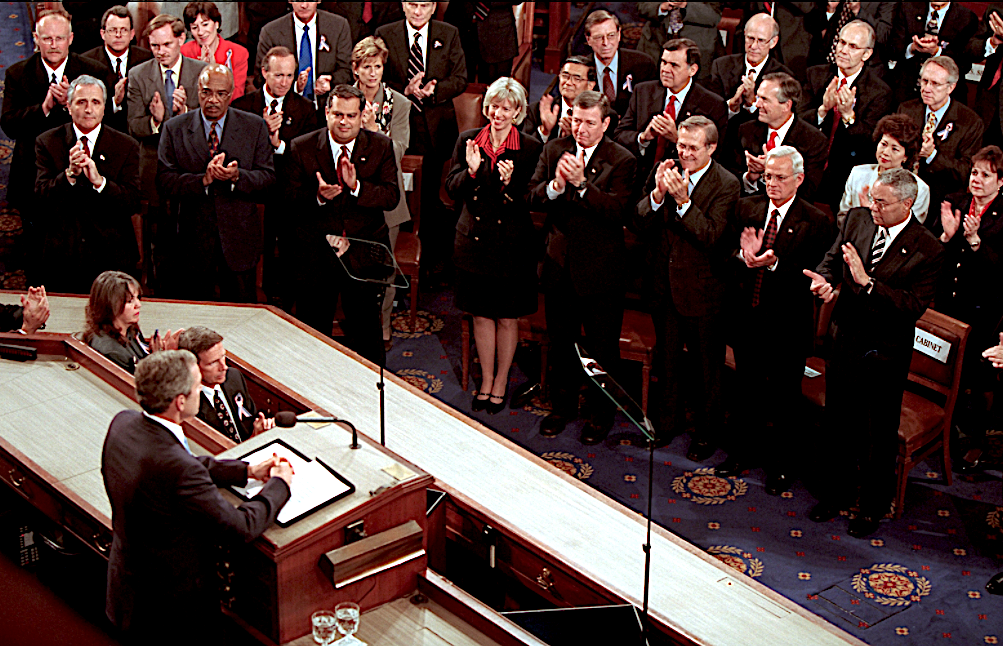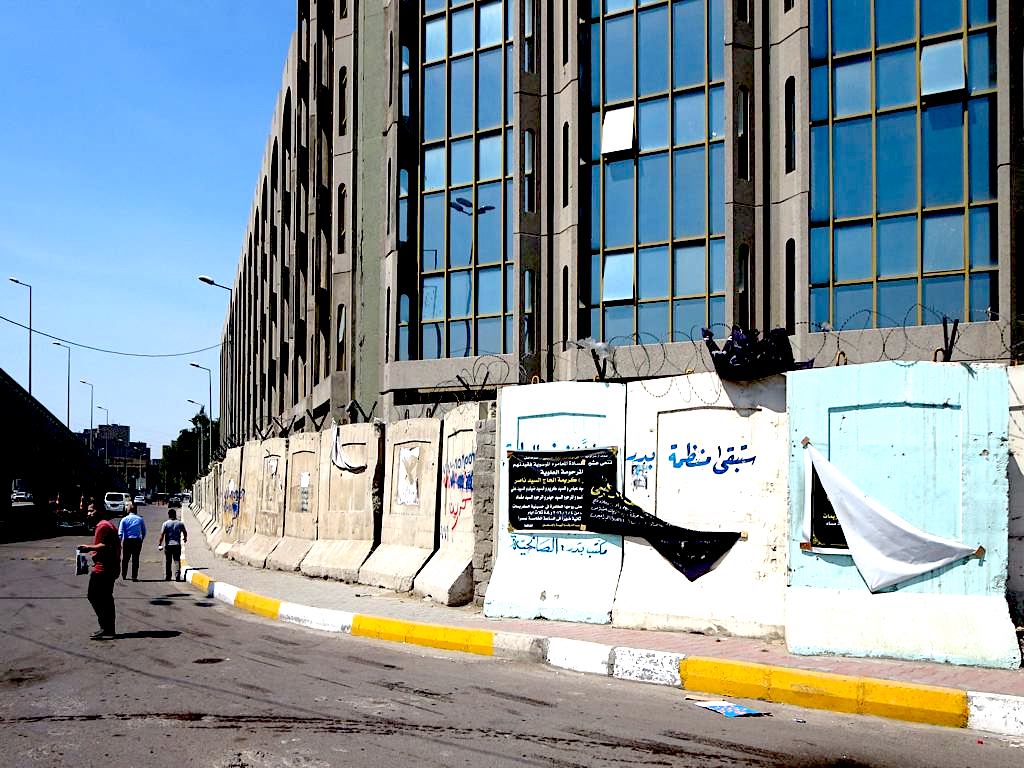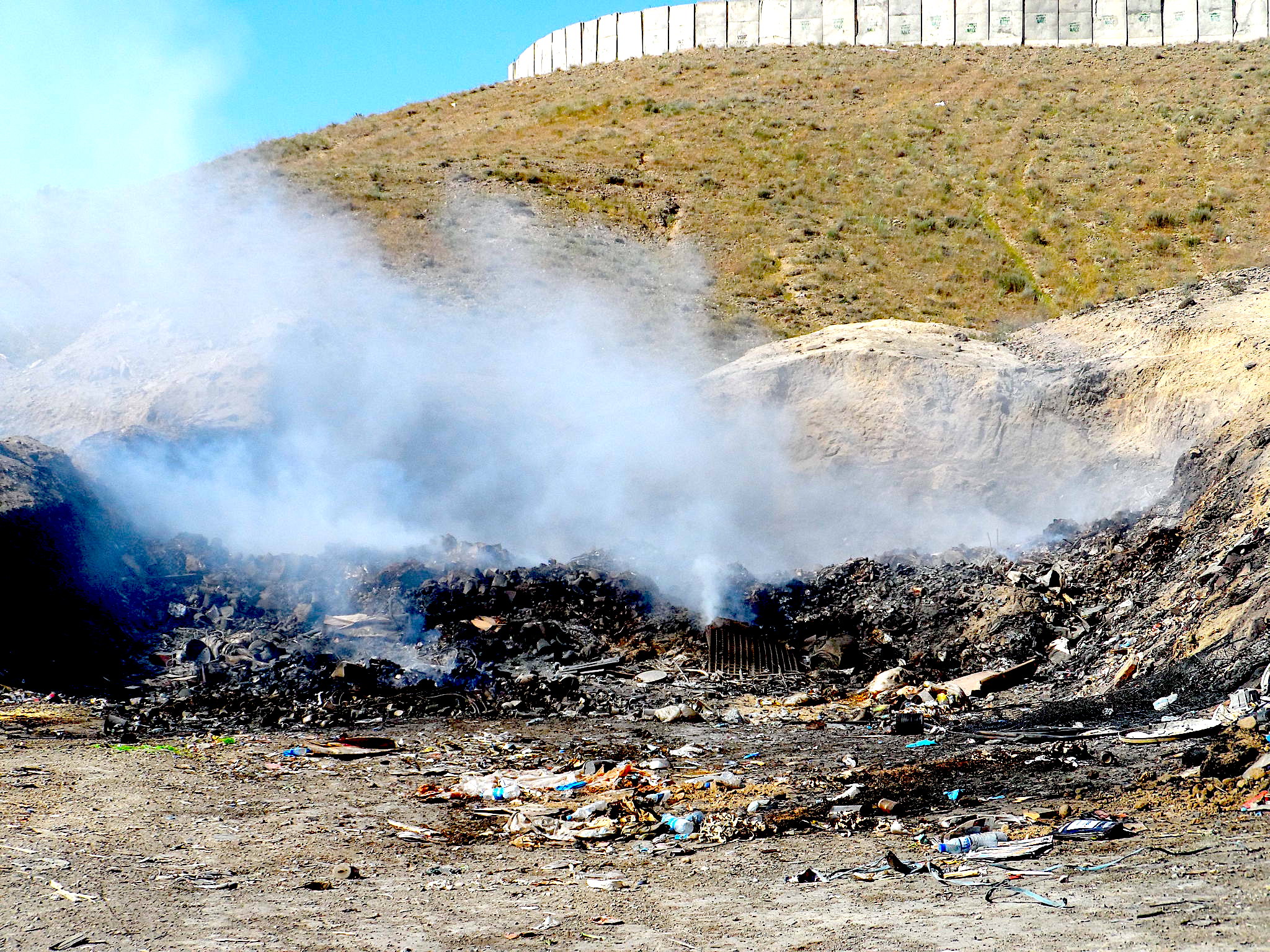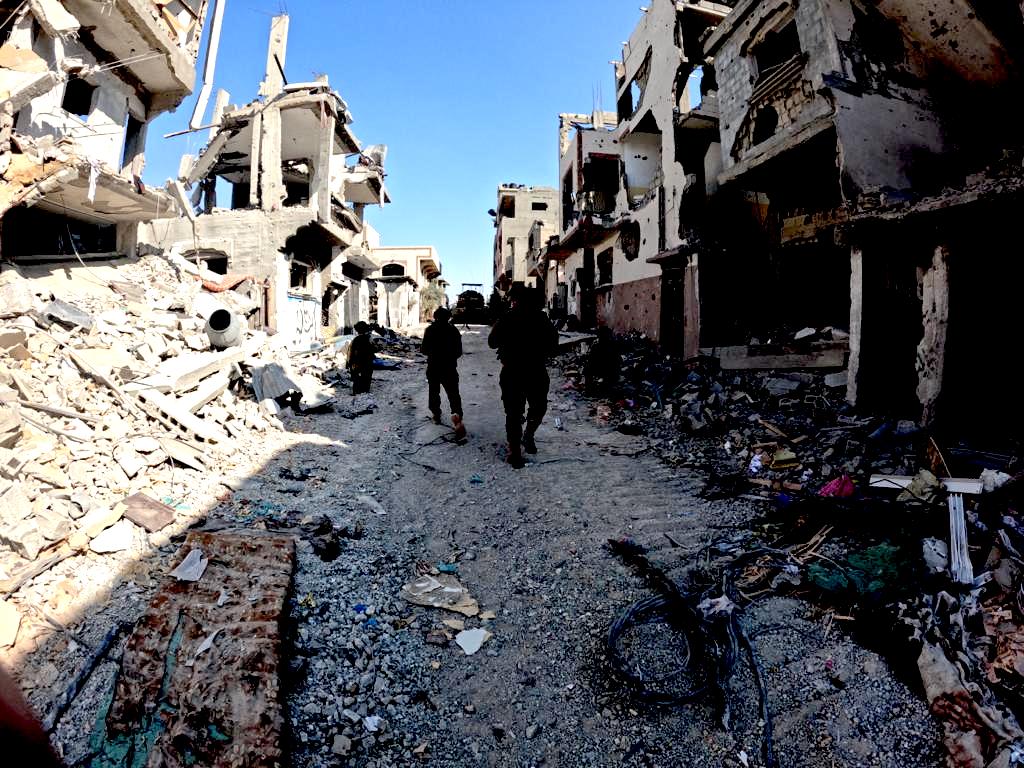US military interventions are not just wars on people — they’re also wars on the climate.

This week marks 23 years since George W. Bush declared a U.S.-led “war on terror” and the people of Afghanistan and Iraq are still suffering its consequences.
After the U.S. invaded Iraq, an estimated half a million Iraqis were killed and at least 9.2 million were displaced. From 2003-2011, more than 4.7 million Iraqis suffered from moderate to severe food insecurity. Over 243,000 people have been killed in the Afghanistan/Pakistan war zone since 2001, more than 70,000 of them civilians. Between 4.5 and 4.6 million people have died in the post-9/11 wars.
The U.S.’s “war on terror” also escalated the climate catastrophe, resulting in local water shortages and extreme weather crises that are only getting worse. In 2022, Afghanistan had its worst drought in 30 years and it is facing a third consecutive year of drought. “The war has exacerbated climate change impacts,” Noor Ahmad Akhundzadah, a professor of hydrology at Kabul University, told the New York Times.
Meanwhile in the current moment, U.S. military assistance to Israel’s genocidal campaign is also intensifying the climate crisis.
As we look back across more than two decades of the “war on terror,” it is clear that many lives will be saved if we can bring a halt to U.S. military interventions throughout the world and simultaneously target the U.S. military’s catastrophic contributions to the climate crisis that threaten us all.
“The U.S. military is the single largest institutional consumer of fossil fuels in the world,” Taylor Smith-Hams, U.S. senior organizer at 350.org, a global climate justice organization, said at a workshop on the Impact of Current Wars on Climate Crisis at the Veterans For Peace (VFP) Convention on August 17. “Militarism and war are key drivers of the climate crisis,” she added, citing fighter jets, warships and the U.S.’s massive constellation of military bases throughout the world.
Climate Effects of the “War on Terror”
.

Bush delivering an address on the Sept. 11 terrorist attacks to a joint session of Congress on Sept. 20, 2011. (U.S. National Archives, Public domain)
.
On September 11, 2001, 19 men committed suicide and took roughly 3,000 people with them by flying two airliners into the World Trade Center, one into the Pentagon and one into a field in Pennsylvania. None of the hijackers hailed from Afghanistan or Iraq; 15 came from Saudi Arabia. Nevertheless, the Bush administration illegally invaded Afghanistan and Iraq and overthrew their governments, then killed, injured and tortured nearly three-quarters of a million of their people.
Beyond the terrible death tolls in both countries, a lesser known consequence of the “war on terror” was the exacerbation of the climate catastrophe, both in the countries targeted by the war and globally.
Since the 1997 Kyoto Protocol excluded military emissions from the counting of national emissions figures, U.S. military emissions are significantly undercounted. Although militaries are a significant source of carbon emissions, little is understood about their carbon footprint.
One of the first studies to expose direct and indirect military emissions as a result of combat was conducted by Benjamin Neimark, Oliver Belcher, Kirsti Ashworth and Reuben Larbi. They examined the use of concrete “blast walls” by U.S. forces in Baghdad, Iraq, from 2003-2008, the first five years of Bush’s “Operation Iraqi Freedom,” to measure the carbon footprint of the war. Concrete walls and barriers were also used in U.S. counterinsurgency operations in Kandahar and Kabul, Afghanistan, from 2008-2012 during “Operation Enduring Freedom.” (Although these two wars did not bring freedom, their effects on the climate crisis are enduring.)
While occupying Baghdad, the U.S. military erected hundreds of miles of blast walls in order to control the urban population pursuant to its counterinsurgency strategy. “Effective weaponisation of concrete has an extraordinary carbon footprint,” Neimark, Belcher, Ashworth and Larbi wrote. “The large carbon footprint comes mainly from the amount of heat and energy in cement production, the main ingredient in concrete.”
.

Concrete blast walls in Baghdad, 2016. (David Stanley, Wikimedia Commons, CC BY 2.0)
.
The logistical movement of troops, convoys, weapons, supplies and equipment, as well as firepower itself, carry a direct carbon cost. Jet propulsion fuel for fighter jets is a major culprit. U.S. military fuel use is “one of the largest single institutional carbon polluters in modern history,” the researchers wrote. But the indirect emissions in blast walls that result from the concrete supply chains that furnish the U.S. military are also substantial, Neimark and his coauthors argue.
“Parts of Afghanistan have warmed twice as much as the global average” New York Times international climate reporter Somini Sengupta wrote in 2021, and the war has intensified the impact of climate change.
Afghanistan ranks in the top 10 countries undergoing extreme weather conditions, including droughts, storms and avalanches, the United Nations Office for the Coordination of Humanitarian Affairs (OCHA) reported a year ago. Afghanistan ranks fourth among countries with the highest risk of a crisis and eighth on the Notre Dame Global Adaptation Index of nations most vulnerable and least prepared to deal with climate change.
.

Open-air burn pit emissions at Forward Operating Base Sharana in Afghanistan in May 2013. (Special IG for Afghanistan Reconstruction, Flickr, CC BY 2.0)
.
The story of what happened in Afghanistan provides a chilling example of the long-term consequences of war on climate change. Decades from now, Gaza, which was already vulnerable to the climate crisis before October 7, 2023, will invariably suffer increased climate effects from Israel’s current genocidal campaign. “Climate consequences including sea level rise, drought and extreme heat were already threatening water supplies and food security in Palestine,” Nina Lakhani wrote in a January article in The Guardian. “The environmental situation in Gaza is now catastrophic.”
Emissions From U.S.-Aided Israeli Genocide Have “Immense” Effect on Climate Crisis
.

Israeli military during ground invasion of the Gaza Strip on Oct. 31, 2023. (IDF Spokesperson’s Unit, Wikimedia Commons, CC BY-SA 3.0)
.
Israel’s ongoing genocide in Gaza has killed at least 41,000 Palestinian people, and likely many more. During the first two months of Israel’s genocidal campaign, emissions that warmed the planet exceeded the annual carbon footprint of over 20 of the world’s most climate-vulnerable countries, according to a study by Benjamin Neimark, Patrick Bigger, Frederick Otu-Larbi and Reuben Larbi. Roughly 281,000 metric tons of war-related carbon dioxide were emitted in the first two months of the war following October 7, 2023. More than 99 percent of these emissions resulted from Israel’s bombing campaign and ground invasion of Gaza and U.S. supply flights to Israel. The climate cost was equivalent to the burning of at least 150,000 tons of coal. Almost half of the emissions were caused by U.S. cargo planes flying military supplies to Israel. Hamas rockets fired into Israel accounted for the equivalent of 300 tons of coal, an indicator of the asymmetry of Israel’s war on Palestine.
“The role of the US in the human and environmental destruction of Gaza cannot be overstated,” said Patrick Bigger, coauthor of the study and research director at the thinktank Climate + Community Project (CCP). During the VFP workshop, Bigger called it an “environmental Nakba.”
David Boyd, UN special rapporteur for human rights and the environment, said,
“This research helps us understand the immense magnitude of military emissions — from preparing for war, carrying out war and rebuilding after war. Armed conflict pushes humanity even closer to the precipice of climate catastrophe, and is an idiotic way to spend our shrinking carbon budget.”
“From an ecological perspective, there is no such thing as an ‘effective’ or ‘green’ technology or military,” Neimark, Belcher, Ashworth and Larbi, coauthors of the concrete blast wall study, found. While Israel touts itself as a global leader in climate change adaptation and mitigation, it is actually engaged in “greenwashing” — misleading marketing practices to make policies appear more environmentally friendly. Indeed, “Israel’s green technologies are fundamentally structured by the Zionist project of appropriating Palestinian lands,” Sara Salazar Hughes, Stepha Velednitsky and Amelia Arden Green argue in their 2022 article, “Greenwashing in Palestine/Israel: Settler colonialism and environmental injustice in the age of climate catastrophe.”
Israel’s systems of waste management, renewable energy and agricultural technologies (“agritech”) are actually mechanisms for appropriation and dispossession of Palestinian territory, according to Hughes, Velednitsky and Green. Although Israel promotes itself as a responsible steward of Palestinian lands, “Israeli sustainability sustains settler colonialism.”
“Climate crisis in Palestine cannot be detached from the Israeli occupation. The brutal and extensively documented apartheid regime that Israel imposes and maintains over Palestinians is fundamentally incompatible with the tenets of climate justice,” Patrick Bigger, Batul Hassan, Salma Elmallah, Seth J. Prins, J. Mijin Cha, Malini Ranganathan, Thomas M. Hanna, Daniel Aldana Cohen and Johanna Bozuwa wrote for the think tank CCP.
Bigger and his coauthors cite Israel’s settler-colonial campaign to replace native olive groves with nonnative plants that reduce biodiversity, increase susceptibility to fire and put unsustainable pressure on natural resources. Palestinians, they write, are much more vulnerable than Israelis to the effects of climate change. “While Palestinians are displaced to support Israel’s renewable energy industry, Palestinian solar projects are destroyed as ‘illegal constructions,’ having failed to secure permits from Israeli authorities.”
As the largest provider of military hardware to the Israeli regime, the U.S. government is “directly complicit” in Israel’s genocide, ethnic cleansing and apartheid. “An immediate, permanent ceasefire and the end of US funding for Israeli apartheid and occupation is needed to halt the ongoing violence and address the driving forces of climate breakdown in Palestine,” Bigger and coauthors wrote.
About 20 percent of the U.S. military’s annual operational emissions is devoted to protecting fossil fuel interests in the Gulf, which is warming twice as rapidly as the rest of the world, according to Neta Crawford, author of The Pentagon, Climate Change and War. Nevertheless, the U.S. and other NATO countries are largely concerned with climate change as a national security threat. They don’t focus on their contributions to it.
“Here in the U.S., our government continues to dump enormous amounts of money into death and destruction at home and around the world, while cutting social programs and refusing to adequately contribute to international climate finance commitments, always with the excuse that there isn’t enough money,” Smith-Hams said at the VFP workshop.
Our anti-militarism work should target the U.S. military’s devastating contributions to the climate crisis. Our future depends on it.
*
Click the share button below to email/forward this article to your friends and colleagues. Follow us on Instagram and Twitter and subscribe to our Telegram Channel. Feel free to repost and share widely Global Research articles.
Get Your Free Copy of “Towards a World War III Scenario: The Dangers of Nuclear War”!
Marjorie Cohn is professor emerita at Thomas Jefferson School of Law, dean of the People’s Academy of International Law and past president of the National Lawyers Guild. She sits on the national advisory boards of Assange Defense and Veterans For Peace. A member of the bureau of the International Association of Democratic Lawyers, she is the U.S. representative to the continental advisory council of the Association of American Jurists. Her books include Drones and Targeted Killing: Legal, Moral and Geopolitical Issues.
Featured image: U.S. combat soldier in the rubble at one of Sadaam Hussein’s palaces in Baghdad, April 24, 2003. (U.S. Air Force, Cherie A. Thurlby, National Archivers, Public domain)














